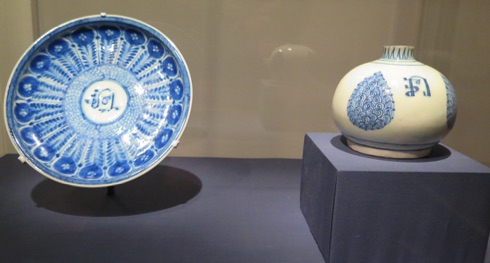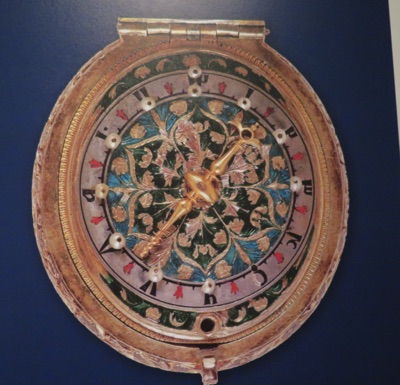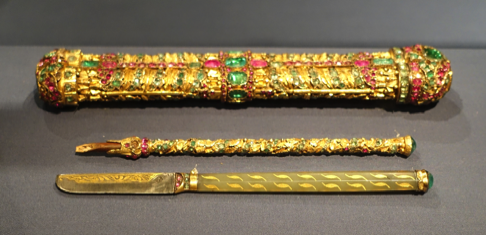Islamic Art Showcased in San Francisco
Featuring exquisite artwork from the Mughal, Safavid and Ottoman empires, “Pearls on a String: Artists, Patrons, and Poets at the Great Islamic Courts” opened at San Francisco’s Asian Art Museum Feb. 26. The exhibition was organized by the Asian Art Museum (AAM) and Baltimore’s Walters Art Museum (WAM) where the stunning collection enjoyed a popular run last year.
On display through May 8, 2016 are extraordinary works dating from the 16th to 18th centuries, including ceramics, textiles, paintings, calligraphy and highly decorated and bejeweled luxury items. The vast geographical area represented stretches across the modern day countries of India, Afghanistan, Pakistan, Iran and Turkey. In addition to items from the Islamic art collections of the WAM and AAM, major pieces were loaned from the Victoria and Albert, British Library, Metropolitan Museum of Art, National Gallery and Smithsonian, among others.
The exhibition focuses on the works of three individuals: Abu’l Fazl, who recorded momentous events at the court of Emperor Akbar in 16th century Mughal India; Muhammad Zaman, who introduced new methods into 17th century Persian painting at the Safavid court of Shah Sulayman in Isfahan; and Ottoman Sultan Mahmud I, who enthusiastically supported the arts and architecture from his cosmopolitan court in Constantinople (modern day Istanbul).
“By providing a rare glimpse of the worlds these figures inhabited, including the social connections that ignited their creativity, this exhibition highlights the importance of both individual initiative and human relationships in creating masterful works of art,” said exhibition curator Qamar Adamjee, associate curator of South Asian and Islamic Art.
(See also January/February 2016 Washington Report, p. 34,35.
A pen box, pen knife and pen holder found inside the bejeweled gun of Mahmud I. 1732. Turkey. Ottoman period (1300-1922). reed, gilded metal, gold, emeralds and rubies.
Bottle with Armenian monogram. approx. 1630-1670. Dish with Armenian monogram. 1600-1700. Iran. Safavid period. (1501-1722) painted and glazed fritware.
Detail of watch made for the Ottoman market 1700-1800 by Nikolaki (Greek). Turkey. Ottoman period (1300-1922) gilded porcelain with underglaze blue decoration, turquoise, rubies (or spinels), garnets, emeralds and gilded silver.
Christ in Glory with Donor and Painter (left) and Last Judgment (right) from Armenian Gospel Book. 1655. by Ter Hayrapet (Armenian). Iran. Safavid period (1501-1722) opaque watercolors, ink and gold on paper.
Gun of Mahmud I made of steel and wood, encrusted with gold, silver, nephrite, diamonds, emeralds and rubies. 1732-1733 (All photos credit: Phil Pasquini)



"Dried ink that makes you think!"



Sebastião Salgado
Leica Gallery San Francisco
From March 1st through May 31st the Leica Gallery in San Ferancisco is presenting a cross section o fblack and white photographs by world famous Brazilian photographer Sebastião Salgado. The small exhibition features a selection from four major series produced over three decades: Sahel, Workers, Migrations, and one of Salgado’s latest, Genesis.
The well received show presents viewers with powerful and provoking images of a world unseen by many of its inhabitants. A nice personal touch of Leica exhibits are the requesite display and related materials of the cameras used to produce the works.
For more information, click here: Leica SF



Page: 1 3 4 5 6
